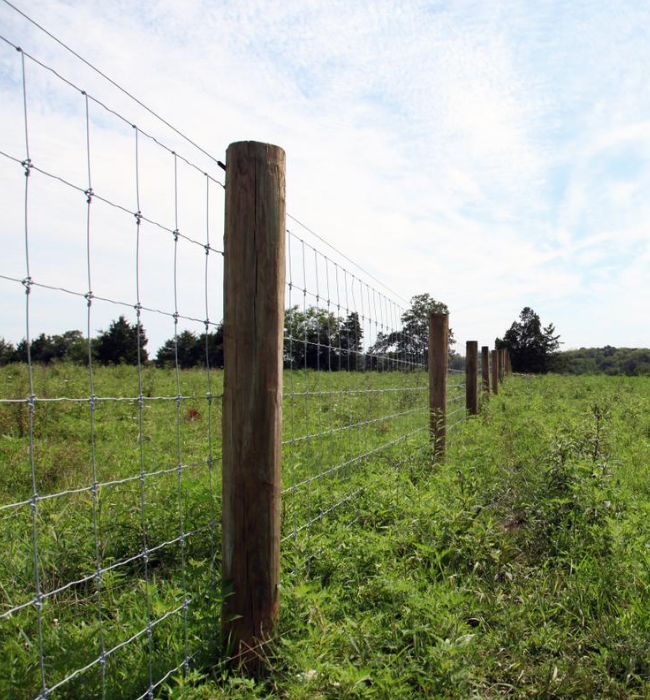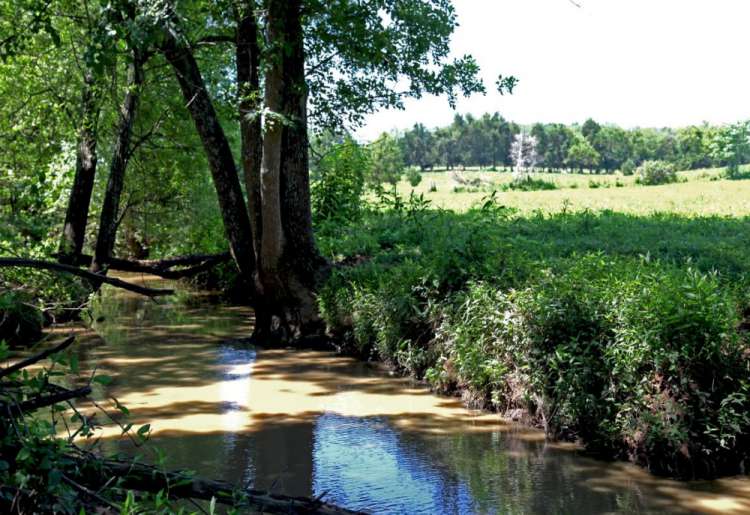“Polluted water is not only bad for us and the environment, but it’s bad for livestock as well,” says Celia Vuocolo, habitat and stewardship specialist at PEC.

A significant stewardship project is wrapping up this fall at Roundabout Meadows, the 141-acre property near Gilbert’s Corner that was gifted to PEC in 2013. The project is focused on implementing agricultural Best Management Practices (BMPs) that will keep livestock away from the property’s streams and provide a clean source of water for cattle. As part of the effort, over 2 miles of fencing and almost a mile of pipeline plumbing for a watering system have been installed.
“Our long-term plan for Roundabout Meadows is to retain its agricultural use, and we want to do so in a manner that is in harmony with being good stewards of the land and water resources, while farming continues on the property,” says Michael Kane, director of conservation at PEC.
Loudoun County Soil and Water Conservation District provided technical and funding assistance for the project. “It’s exciting to see the property continue in active agricultural use and also see so many conservation practices being put to use,” says Chris Van Vlack, urban and agriculture conservationist at Loudoun Soil & Water Conservation District. “We were very happy to help PEC put together a plan that suited the future farming operation as well as protecting Howsers Branch.”
Like many farm properties in the Piedmont, the cattle grazing on the property had free access to Howser’s Branch and other streams. This situation was contributing to degradation of the property’s stream banks and causing fecal contamination of its waters, which played a part in the Virginia Department of Environmental Quality (DEQ) identifying Howsers Branch as having pollution levels that exceed Federal standards.
In 2014, two participants of our Fellowship Program, Michael Ament and Preston White, tested the condition of the streams at Roundabout Meadows. The fellows and PEC’s Gem Bingol, a certified stream monitor, performed macroinvertebrate monitoring in two locations on Howser’s Branch. “We assessed the diversity of aquatic insects that live along the streambed,” explains Bingol. “Certain macroinvertebrates have a greater sensitivity to pollution, so their presence or absence can indicate the severity of pollution in the water.”
Some key findings were the high turbidity levels and stream temperatures, which make it hard for most of the bottom-dwelling insects to survive. The fellows counted more than 80 sites where the cattle were crossing the tributaries, and each one of the documented spots was eroded and causing sediment runoff.
In addition to the stream assessment, PEC staffer Julie Bolthouse and Bingol initiated a bacteria monitoring effort of Howser’s Branch, the same year. The monthly samples they took to look for e-coli levels proved that the stream is unsuitable for human contact due to excessive bacteria levels. The collected data was given to the Goose Creek Association for their monitoring database, and it was also shared with DEQ. The baseline data will provide us information to assess the effectiveness of our project in cleaning up the stream. We will also use this information to explain the benefits of fencing to farmers.
“Installation of the fencing on the property is a critical step in addressing the water quality issues we have documented,” says Kane. “Keeping the cattle away from the streams will provide immediate relief from the daily sediment deposition and fecal contamination caused by the livestock.”

The fencing is set back from Howser’s Branch by 50 feet to allow for the establishment of a forested riparian buffer over time, which will help the banks to heal. The regrowth of vegetation will hold the soil in place and filter runoff from the nearby pastures.
Without access to the streams, the cattle needed a new water source for drinking. So, an existing well on the property was tapped and piping was laid for new watering troughs, which provide cool, clean water year round.
By implementing the agricultural BMPs and restoring the water quality, the health of the livestock benefits. “After an exclusion project is completed, cattle farmers will often see a decrease in parasite loads, intestinal diseases, and calf mortality in their herds. This leads to better market weights and less money they have to spend on medication. It’s really a win-win for everybody,” says Vuocolo.
The implementation of BMPs also sets the stage for other practices that can improve agricultural productivity and natural resource protection over time. For example, the installation of the fencing and watering troughs can facilitate a rotational grazing system for livestock. This practice can boost productivity by improving soil health and the quality of the forage.
We are planning to implement rotational grazing at Roundabout Meadows in the future. Other plans for the property include a prescribed burn, which will help control invasive species and increase soil health, among other benefits. The property will also be used as a demonstration site for landowners interested in implementing BMPs.
We will continue to track the impact of our stewardship and other land management practices. If you are interested in using BMPs on your land, contact your local Soil and Water Conservation District.
This article was featured in our Fall 2016 Member Newsletter, The Piedmont View.
